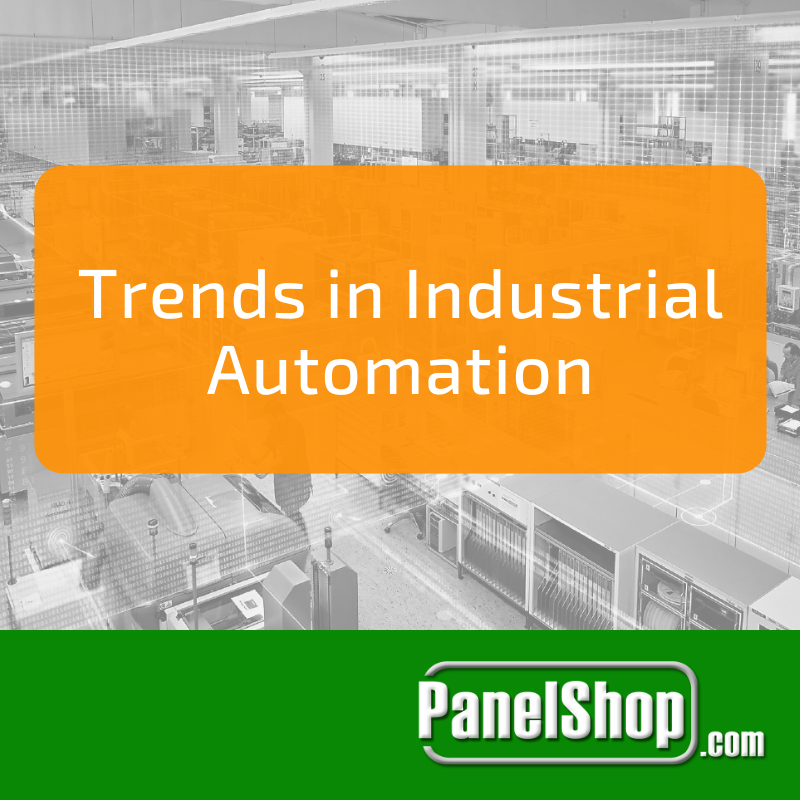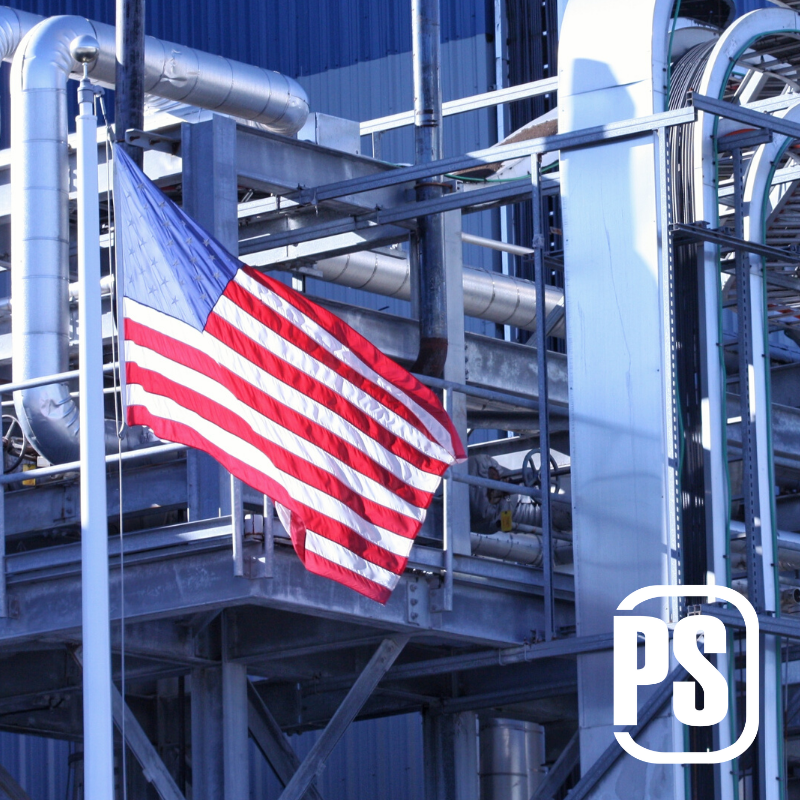.png?width=249&name=knowing%20the%20basics%20of%20plcs%20(1).png)
The 1970s saw the introduction of PLCs or Programmable Logic Controllers, which would forever change the way automation is achieved in industrial environments. Known for its rugged design and scalable implementation, the PLC was adapted by all major manufacturers and to this day is the norm for industrial automation. Allen-Bradley, Omron, Siemens, AEG, etc. became the leaders in PLC manufacturing, and soon the controllers had the processing capability of a computer while withstanding harsh industrial conditions.
It wasn’t until the 1990s when renewed interest in Personal Computers started gaining ground. The primary reason was increase in processor speed, reduction in size and a downward trend in cost. Industries also started incorporating PCs into their plants due to the level of supervisory control they provided over other machines including PLCs.
However, today both PLCs and PCs have developed similar features which has made it quite difficult for control engineers to decide on which product to use. Let’s take a look at both these products’ core functionalities.
PLCs were designed as a more streamlined, cut-down, highly flexible and rugged alternative to relay panels and switch boxes. It was generally assigned specific tasks, which were pre-programmed and then executed. However, customization was another factor that PLCs had to provide, therefore a unique language and structure was selected for all programming activities. Known as “ladder logic”, this allowed quick customization in code according to the situation. On top of all this, PLCs also had to bear the brunt of electromagnetic radiations, vibrations and contamination. With the passage of time, PLCs had to keep up with developing technologies as well. Soon, ethernet connections, PID process controls and integrated safety became part of PLCs, adding to their long list of features.
PCs eventually developed features that put them in line with PLCs in terms of functionality. In addition, they retained their robustness as well as customization due to the availability of card slots and ports. The processing power of PCs was often greater than PLCs as they contained real-time kernel, enabling it to perform time-critical tasks and implement control algorithms.
The final goal is robust, efficient and reliable control over industrial assets, and therefore every single credential of PLCs and PCs must be put head to head to gain a better understanding and logical conclusion.
Operation
Standard PLCs are embedded with a real-time operation system that uses a dedicated processor to ensure a high degree of reliability during control operations. A PLC’s OS is designed specifically for carrying out tasks related to control and therefore there is no need for utilities such as antivirus programs or registry cleaners. This in effect, increases the processing throughput of the system, making sure more processing cycles are utilized monitoring crucial parameters.
PCs are also designed with real-time kernel and an associated operating system, putting it neck to neck against PLCs in terms of processing capabilities. The reliability of PCs was troubled as earlier experiences with system crashes were quite common. However, this limitation was soon eliminated with simpler OS that were specially built for use in industries.
Therefore, PLCs and PCs are currently at the same level in terms of operation.
Hardware Integration
The industrial requirements of today are no longer similar to the requirements 20 years ago. Both PLCs and PCs are required to control a host of devices for communication, monitoring and control, and should therefore have sufficient expansion capabilities. Well-known industrial communication protocols include Profbus, CANbus, Modbus, EtherCAT, EtherNET/IP, etc.
Even though both the PLC and PC offer these fieldbus options, the PLC has all these capabilities built into it by default. In contrast, a PC may require an expansion card for supporting a specific protocol. But the greater number of expansion slots in PCs mean that greater customization is possible and a wide variety of interfaces may be utilized for operation.
This puts PCs ahead of PLCs when it comes to handling tasks such as advanced high-resolution imaging or others with multiple unexpected processing requirements. Furthermore, if memory-demanding tasks are to be accomplished using a PLC, then a supplementary industrial PLC would have to be installed to keep up with the dynamic parameters and connections.
Security
Cyber-espionage has always been on the rise due to the increased connectivity between devices. Industrial security is paramount to ensure continuous uptime and maximum productivity. There are two basic dimensions of security that a PLC/PC should be concerned with:
- Blocking unauthorized access from external attacks
- Limiting user access as per their rights/designation
Traditionally, PLCs have been thought to be immune to malware attacks and this is true to some extent. PLCs have dedicated OS and limited functionality, putting them at lesser risk from attacks compared to PCs. However, recent episodes such as the one with “Stuxnet”, a malware targeting Siemens’ PLCs have dented the PLC’s reputation as being immune to viruses. Still, the recorded instances of such attacks are extremely limited. In comparison, PCs are extremely vulnerable to malware attacks, and require top of the line antivirus protection and monitoring.
Programming
Programming environment and language is crucial for obtaining optimum efficiency, whether it’s from a PLC or PC. One of the major difference between a PLC and PC is the way in which programs are developed and executed. A PLC usually follows a scan-based program execution, whereas PC software are usually event-driven. The different execution styles in turn translate into different programming philosophy.
PLCs are programmed using languages specified in the IEC 61131-3 standard, i.e. ladder logic or proprietary vendor language. In comparison, PC-based programs use languages such as C/C++/.NET. No language can be termed better than the other as it depends solely on the expertise of the programmer. But due to the increased trend of PC based solutions and courses, a programmer is more likely to find C/C++/.NET more flexible compared to ladder logic.
Cost Discussions
This may be the last topic under discussion, but is one of the most important ones. The automation and control problems of today are multi-dimensional and can be solved in more than one manner. Both PC-based or PLC-based solutions are eligible for some applications, however the major constraint that proves detrimental is the cost associated with these solutions.
- Performance vs. Cost
The initial cost of a PC-based solution may be higher than a PLC one but whenever demanding calculations and complex network loads need to be processed, a PC-based program is more cost-effective. In comparison, PLCs may be initially cheap but as processing power increases, their cost follows an exponential trend.
- Expandability vs. Cost
PCs have a higher cost than PLCs when no external peripherals need to be added as PLCs usually support standard industrial equipment. However, when a solution requires a plethora of external controls, a PC-based solution is much better-suited than a PLC-based one.
- Ruggedness vs. Cost
PLCs do not require excess of protection equipment to increase their ruggedness and shielding. In comparison, a PC may require considerable investment on shielding it from harsh environment effects so that maximum uptime can be guaranteed.
Interested in learning more? Contact an expert, or visit our website: PanelShop.com.





